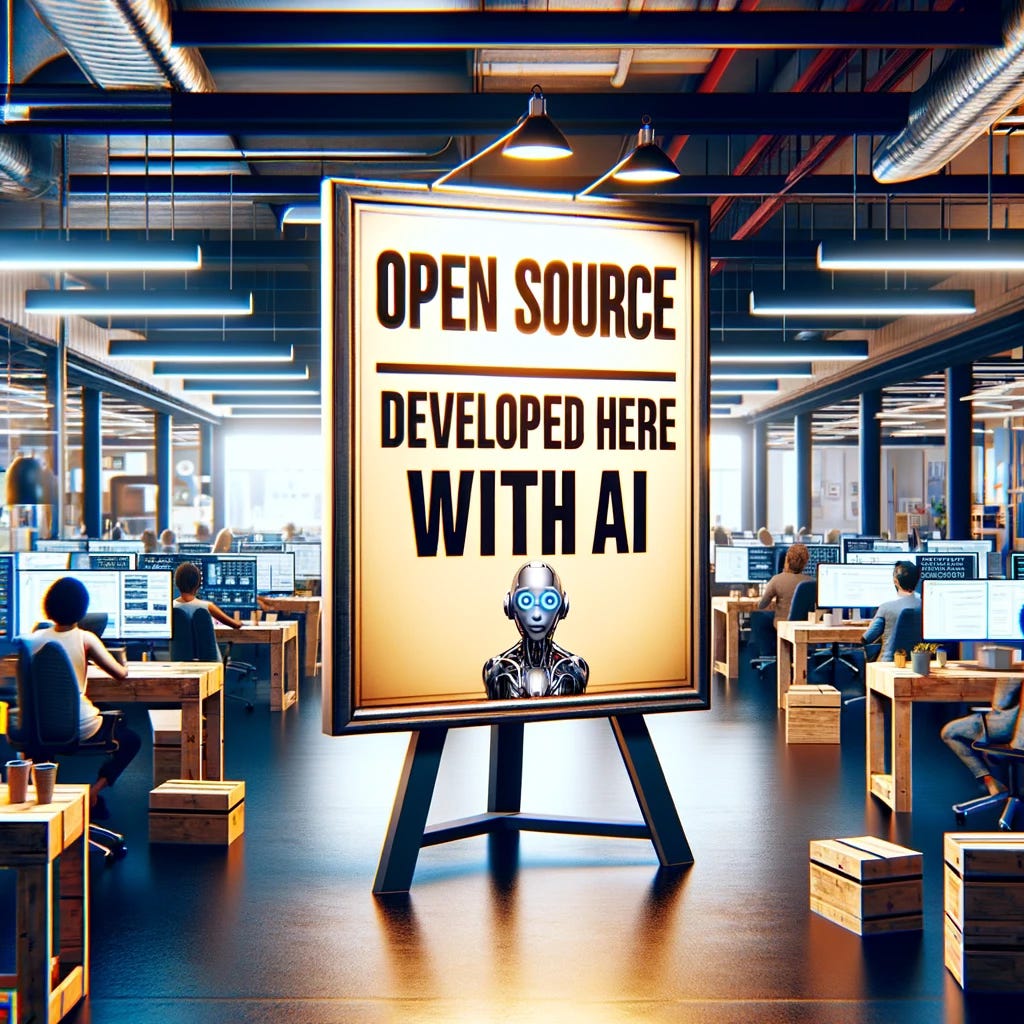AI as a Catalyst for Open Source Software Development in 2024
This is Part Two of a Four-Part Series focusing on AI's Impact on the Enterprise & Software Industry
Since mid-December, I've been actively exploring the impact of AI on leading open source software (OSS) projects, investigating its potential to shape OSS development this year and beyond for both enterprises and vendors.
The ongoing evolution of AI is likely to spur the growth of comprehensive OSS AI libraries, catering to machine learning, neural networks, NLP and data science. These communal resources will be instrumental in propelling AI innovation forward, including these five vital OSS domains:
Surge in Open Source Large Language Models (LLMs): The increase in open-source LLMs – such as EleutherAI's GPT-Neo and GPT-J models, Hugging Face's Transformers Library, and BigScience’s BLOOM Model – is expanding the access to state-of-the-art AI technology. This trend is set to expand, offering diverse groups of researchers, developers, and businesses the tools to explore innovative applications and deepen their understanding of LLM capabilities and limitations.
AI-Enhanced Coding and Debugging Tools: Open-source AI-assisted tools are revolutionizing coding and debugging processes. By harnessing AI and machine learning algorithms, these tools vastly improve efficiency and accuracy in coding tasks. Key examples include Kite, TabNine, GitHub's CoPilot, AWS's CodeGuru, DeepCode, Eclipse OMR, TensorFlow.js and PySonar2. In many dev groups these innovations are integral in integrating AI into software development, streamlining workflows, reducing bugs, elevating code quality, and boosting productivity.
Open Source Vulnerability Detection: These tools are advancing cybersecurity, particularly in pinpointing and addressing vulnerabilities in software systems. Utilizing AI and machine learning for code analysis, they identify security risks and propose corrective measures. Prominent examples include EleutherAI, Flawfinder, OWASP Dependency-Check, PhpSecurityAudit, Python's Bandit, Pyre, SonarQube, Semgrep and TensorFlow.js.
Evolution of Open Source MLOps: The burgeoning field of open source MLOps frameworks is refining the deployment and management of machine learning models and data science pipelines. This sector is poised for further growth, facilitating applications like predictive infrastructure monitoring. Notable examples include MLFlow, KubeFlow and Ray.
Emergence of Open Source AI Middleware: Serving as a crucial intermediary layer, open-source AI middleware offers essential functionality and services for developing and managing AI app’s. This includes Acumos AI, Apache PredictionIO, Flyte, Inference, ONNX Runtime, NVIDIA Triton Server, Seldon Core and TensorFlow Serving among others.
The synergies of OSS and AI promises to significantly empower developers, enabling them to create more sophisticated, AI-integrated applications. Looking ahead, the OSS community is on course to create game-changing advancements in fields like trusted AI, quantum machine learning, and bio-inspired neural networks, thereby playing a pivotal role in sculpting the technological landscape of the future.


